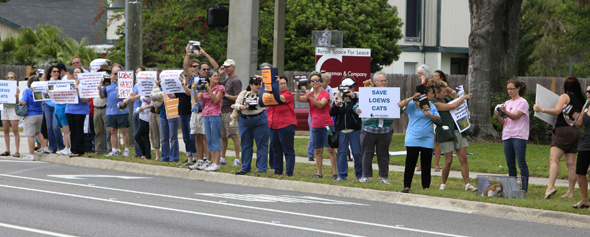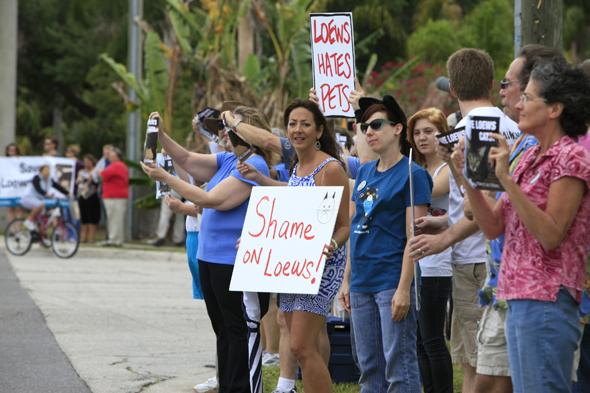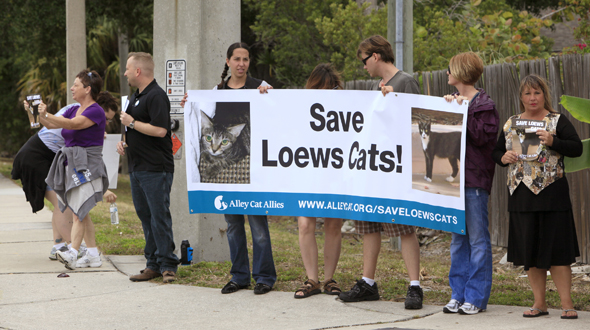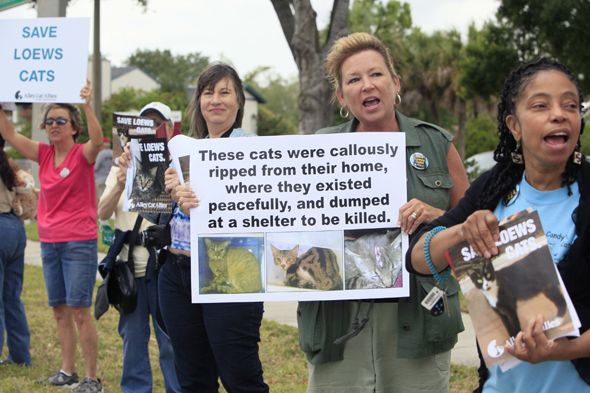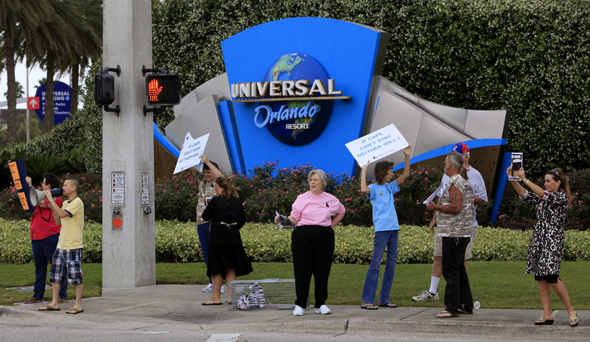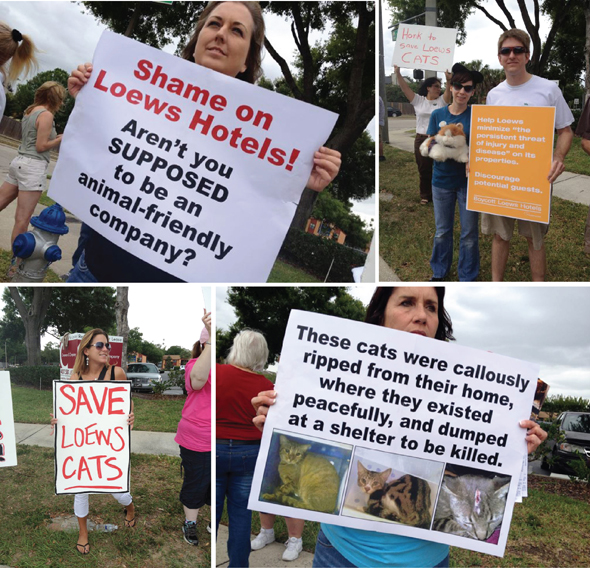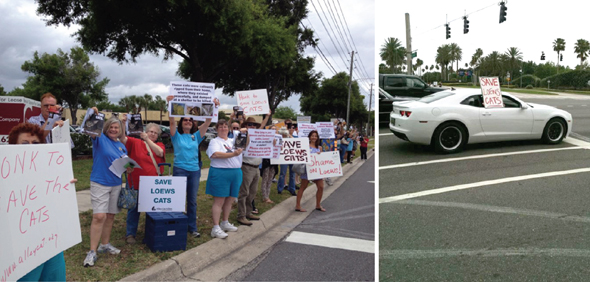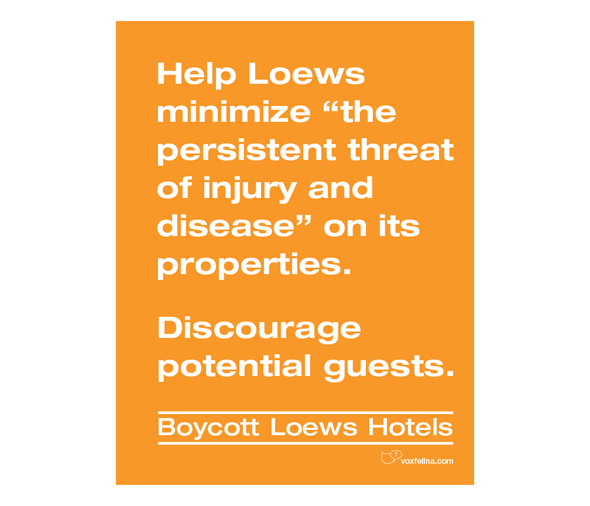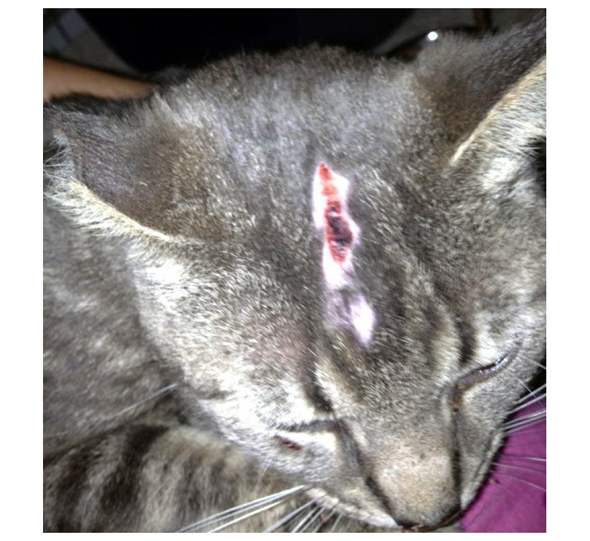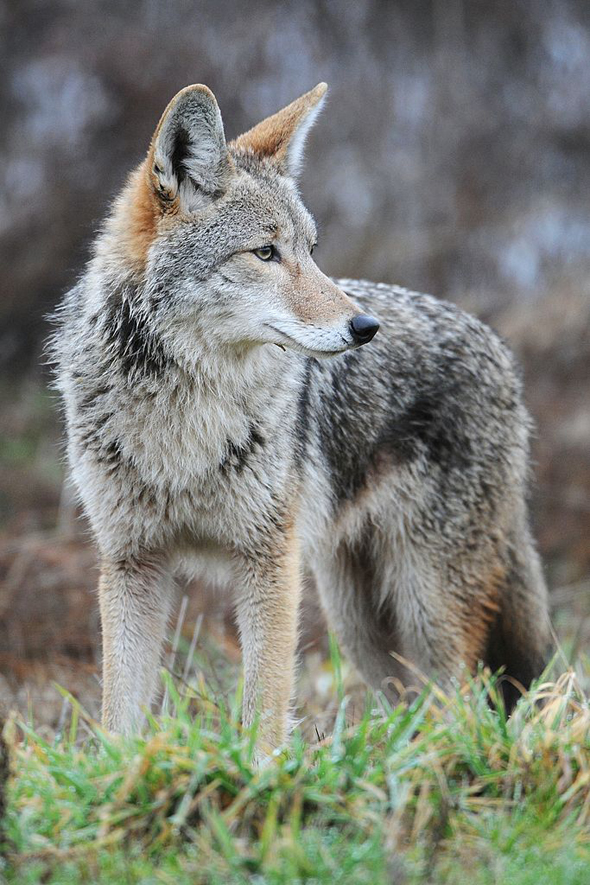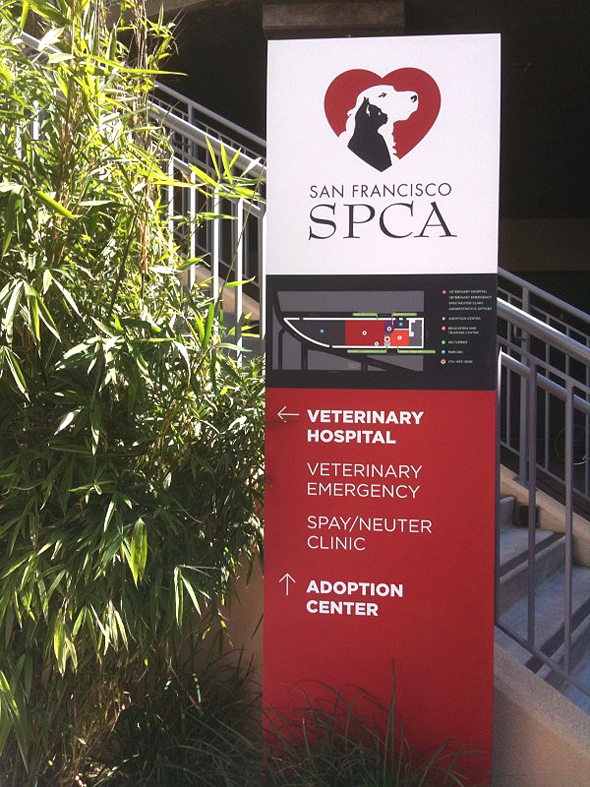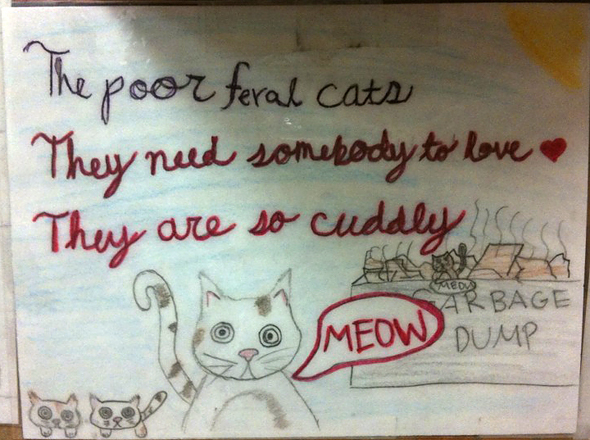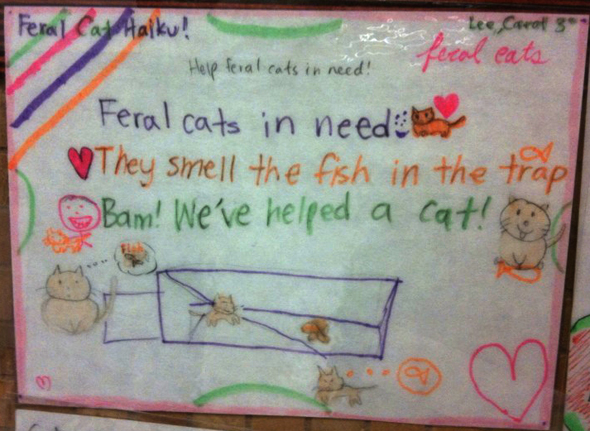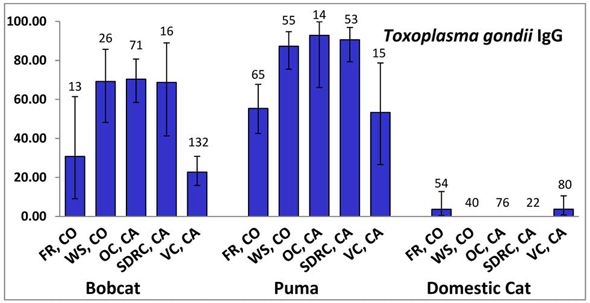“Cat Fight,” which appears in the latest issue of Conservation magazine, does little to cut through the rhetoric or clear up the numerous misrepresentations that plague the debate over free-roaming cats.

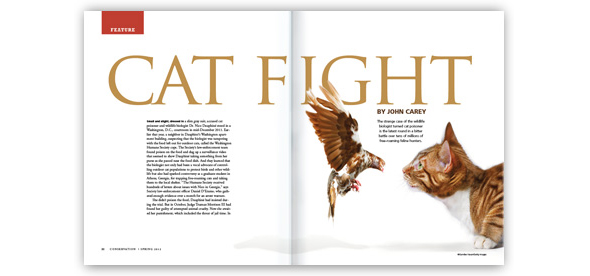
There is, it’s often said, no such thing as bad PR. Even so, I’m not thrilled with the way I’m portrayed in an article appearing in the current issue of Conservation. It’s only a couple of quotes, but still, I worry that I come off as more of a bomb-thrower than anything else.
“Wolf writes a blog, Vox Felina,” explains writer John Carey, in “Cat Fight,” “which regularly excoriates wildlife biologists for what Wolf calls their ‘sloppy pseudo-science.’ He charges that ‘the science in Dauphine’s paper about cats was so horrific that she should have never made it out of graduate school’ and that ‘Peter Marra is taking six bird deaths and predicting the Apocalypse.’”
As I told Carey via e-mail, just after the piece was published online, I don’t believe the quotes are accurate. Carey, on the other hand, assures me (in a cordial, professional manner typical of our exchanges) that “the quotes are exactly what [I] said.” (Neither of us recorded our conversation.)
“I know I realized immediately when you said those things that they were precisely the type of colorful statements that illustrate the nature of the debate, so I did appreciate you using such colorful language.”
Fair enough. Perhaps it’s not all the important if the content isn’t precisely correct—the tone is certainly accurate.
If I am a bomb-thrower, though, I am at least a well-informed bomb-thrower. And the “targets”—to extend the metaphor—have, simply put, got it coming to them. Carey acknowledges that I “do an excellent job scrutinizing the scientific evidence, and have clearly thought deeply about both sides of the issue.” Unfortunately, that doesn’t come across to Conservation readers.
That said, I want to make it clear: I’m grateful to have been included in the piece, and grateful, too, for my conversations with Carey. And whatever quibbles I have about my portrayal pale in comparison to various other aspects of “Cat Fight.”
Stuffing the Ballot Box
Referring to Peter Marra’s well-publicized catbird study, Carey writes: “Predators nabbed nearly half the birds, and cats were the number one predator.” [1]
Number one predator?
Certainly, this was the message Marra emphasized to the press—but I thought I’d straightened this out with Carey on the phone, and with a follow-up e-mail.
Here’s what Marra and his colleagues report in their paper:
A total of 69 fledglings were monitored, of which 42 (61 percent) died over the course of the study. Of those mortalities, 33 (79 percent) were due to predation of some kind. Eight of the 33 predatory events were observed directly: six involved domestic cats, one a black rat snake, and one a red-shouldered hawk.
That leaves 25 predation events (76 percent) for which direct attributions could not be made—which, in and of itself, raises serious questions about Carey’s “number one predator” claim.
About those other 25: Marra and his co-authors concede that “not all mortalities could be clearly assigned.” Seven were attributed to rats or chipmunks because they were “found cached underground,” while another one was attributed to birds because the remains were found in a tree.
In addition, 14 mortalities “could not be assigned to a specific predator.” Which leaves three: “fledglings found with body damage or missing heads were considered symptomatic of cat kills.” [2]
In fact, it’s rather well known that such predatory behavior is symptomatic not of cats, but of owls, grackles, jays, magpies, and even raccoons [3–5]—something I addressed in an October 2010 post (and discussed with Carey).
All of which is difficult to reconcile with Marra’s claim, in “Cat Fight,” that he and his colleagues “were very conservative assigning mortality to cats,” [1] and with his apparent confidence (shared by Carey) in putting cats at the top of the list.
Curious, too, that, although Carey opens his article with Nico Dauphine’s December 2011 sentencing hearing, he never mentions the fact that Marra was Dauphine’s advisor at the Smithsonian Migratory Bird Center. (I suppose the connection isn’t something Marra brags about these days.)
The Cats Came Back
Carey argues that “moving cat colonies away from areas that harbor threatened species is a no-brainer” but points out that “it doesn’t always work.”
“In Fortescue, New Jersey, a colony of feral cats was moved away from the shore of Delaware Bay in 2011 to help protect red knots, which stop there in huge numbers to gorge on horseshoe-crab eggs to fuel their long migration from the tip of South America to the Arctic. But after only a few months, cats were back.” [1]
Here, I’ll defer to Animal Protection League of New Jersey attorney Michelle Lerner, whose comment was the first posted after “Cat Fight” was available online:
“The details about the Fortescue cats, with which I was involved, are incorrect. The colony was not ‘moved,’ it was removed completely. 40 cats were moved to a fence enclosure on a farm several counties away, 7 went to a sanctuary in another state, others went to barns or were friendly enough to be adopted. Removal was used, which is what the anti-TNR people always want. The only difference is the cats were not killed—something that was possible because of limited numbers. It is true that, due to the vacuum effect, different cats then showed up. The nonprofit doing the removal keeps trapping there in coordination with animal control to try to get them all. A few per month show up. But this is why TNR advocates warn removal never really works without intensive management and repeat trapping, and why statistical studies have shown it takes 10 times the effort to control a colony through removal as through TNR. Because there is a reason the cats were there in the first place and more will just move in—more who are unneutered—if the cats are removed.”
It’s worth pointing out, too, that, unlike the current relocation effort, taxpayers would be footing the bill for an ongoing lethal roundup.
And I wish Carey had included a bit of additional context here. The greatest threat to those red knots, from what I can tell (admittedly, doing nothing more than a quick Google search), has little to do with cats being fed nearby. According to The Wetlands Institute:
“…overharvesting of female horseshoe crabs by commercial fishermen, coupled with loss of spawning habitat resulting from beach erosion associated with sea level rise, has resulted in a precipitous decline in the Delaware Bay horseshoe crab population, and therefore the number of eggs available to feed migratory birds. This, in turn, has led to a dramatic decrease in the size of annual red knot migrating populations, to the point that red knots have been proposed for federally endangered status.”
Indeed, the Delaware Nature Society reports: “In 2008, New Jersey placed a moratorium on horseshoe crab harvests until the red knot numbers rebound.”
The Scientific Community v. The People of the District of Columbia
If Marra hasn’t come to Dauphine’s defense, Chris Lepczyk has—with the kind of confidence he (and Marra) usually reserve for vilifying free-roaming cats.
“‘I am 100 percent confident she was not poisoning cats,’ says University of Hawaii wildlife ecologist Christopher Lepczyk, who fears that she was convicted in part because of her articles about the cat-predation problem. ‘I don’t think anyone in the scientific community agrees that she is guilty.’” [1]
That’s quite an endorsement—especially in light of… you know, the facts.
On December 14th, the day Dauphine was sentenced, CNN reported that Superior Court Judge A. Truman Morrison III “said he had received a number of letters from people who know Dauphine.”
“He said such letters usually try to make a case that the verdict was in error, but in this case, the judge said, no one quarreled with the guilty verdict… Morrison said it was clear from letters written by Dauphine’s colleagues that ‘her career, if not over, it’s in grave jeopardy.’ The judge said that was already partial punishment for her actions.”
But Lepczyk’s right when he says the verdict was, in part, the result of Dauphine’s writings—just not in the way he suggests. Indeed, the day Dauphine was found guilty, The Washington Post reported: “Senior Judge Truman A. Morrison III said it was the video, along with Dauphine’s testimony, that led him to believe she had ‘motive and opportunity.’”
“He specifically pointed to her repeated denials of her writings. ‘Her inability and unwillingness to own up to her own professional writings as her own undermined her credibility,’ Morrison said.”
All of which—not to put too fine a point on it—was included in my numerous posts following the case. Perhaps Lepczyk ought to subscribe to Vox Felina.
I’ve been saying for nearly two years now that Dauphine’s professional work on the subject of free-roaming cats—cited and promoted with great enthusiasm before all this nasty press attention—is as indefensible as the actions that landed her in DC Superior Court. It’s a shame Carey didn’t pin down Lepczyk (and others) on that point.
Numb and Numb-er
If Carey included me in “Cat Fight” because of my colorful language, I have to imagine Stephen Vantassel, project coordinator of distance education for the University of Nebraska-Lincoln’s School of Natural Resources, was included for his unintended irony.
Referring to the toll cats take on wildlife, Vantassel told Carey, “The numbers are mind-numbing.” [1]
Actually, “mind-numbing” is a fitting description for the content of, and motivation behind, Feral Cats and Their Management, the well-publicized paper Vantassel co-authored in late 2010. Not only do the authors fail to get a handle on the predation numbers, they reveal a significant lack of understanding of the key issues surrounding cats and predation in general. Indeed, they misread, misinterpret, and/or misrepresent nearly every bit of research they reference. And, some of what the authors include isn’t valid research to begin with.
Two years later, it seems he’s still got nothing to contribute to the discussion.
OK, maybe that’s being too harsh. Consider what Vantassel has to say, in the sidebar that accompanies “Cat Fight,” about the uncertainty surrounding the legal status of free-roaming cats: it “has essentially turned outdoor cats into protected predators.” [6]
Protected predators?
Now, here’s a subject Vantassel knows well. After all, his PhD (theology) dissertation was dedicated to: “…fur trappers who, every winter, brave the harsh weather in continuance of America’s oldest industry. Regrettably, they must also endure the ravages of urban sprawl and the derision of an ungrateful and ignorant public.” [7]
Wisconsin: Landmarks and Mirages
My greatest disappointment with “Cat Fight”—one shared by others I’ve spoken with—is Carey’s inclusion of the infamous “Wisconsin Study.”
“In a landmark study in Wisconsin, Stanley Temple, now professor emeritus of forest and wildlife ecology at the University of Wisconsin, and his colleagues radio-collared free-ranging rural cats, watched the animals’ hunting behavior, and examined their stomach contents. (An inflammatory and inaccurate press report that implied that the researchers had killed the cats for the stomach contents—in fact, they used an emetic—led to death threats against Temple.) The study showed that each cat killed an average of 5.6 birds a year. With an estimated 1.4 million free-ranging rural cats just in Wisconsin, that’s nearly 8 million birds.” [1]
When I spoke with Carey, he’d already talked to Temple. And when he referred to a predation study Temple had done, I stopped him in his tracks: If Temple conducted any such work, it was never published.
What has been published involved combining cat density numbers Temple and graduate student John Coleman had gathered by surveying “farmers and other rural residents in Wisconsin for information about their free-ranging (not house-bound) cats” [8] with predation numbers from studies conducted in the 1930s and 1950s. All of which is explained in a 1992 article the two wrote for Wildlife Control Technology:
“…our four year study of cat predation in Wisconsin, completed in1992, coupled with data from other studies, allows us to make a reasonable estimate of birds killed annually in this state… At the high end, are estimates from diet studies of rural cats that indicate at least one kill per cat per day, resulting in over 365 kills per cat per year [9–11]. Other studies report 28 kills per cat per year for urban cats, and 91 kills per cat per year for rural cats [12].” [13]
“Using low values,” then, Temple and Coleman multiplied their estimated 1.4 million rural free-roaming cats in the state by 28 (“twice urban kill rate”), and then multiply that by 20 percent (the “low dietary percent,” as they call it, though it’s actually a gross misinterpretation of Mike Fitzgerald’s work, as Ellen Perry Berkeley points out in her 2004 book TNR Past Present and Future: A history of the trap-neuter-return movement [14]). The resulting “estimate” is “7.8 million birds killed annually.”
Twenty years later, though, the story seems to have changed dramatically.
Now, we’re to believe that Temple and Coleman’s study (funded, by the way, with “about $100,000 … from the [University of Wisconsin], U.S. Agriculture Department and the state Department of Natural Resources” [15]) revealed an average predation rate of 5.6 birds/year/cat. And that the 7.8 million figure comes not from “coupling” Temple and Coleman’s density work with others’ predation studies, but from their work alone.
Or perhaps the two methods resulted in exactly the same estimate.
Which, as I told Carey after reading the article, would be one hell of a coincidence. In fact, the very sources he cites call into question—if not discredit entirely—Temple’s claim.
Simply put: Carey failed to dig into this deeply enough. Instead of further perpetuating the myth of the Wisconsin Study, he might have exposed it for what it is: little more than a few misguided (and overpriced) back-of-the-envelope calculations—which Temple himself backed away from during a 1994 interview with The Sonoma County Independent: “They aren’t actual data; that was just our projection to show how bad it might be.” [16]
Or, failing that, then at least ignore the thing entirely.
Landmark study? Only insofar as it was instrumental in launching what’s become a witch-hunt against free-roaming cats in this country.
• • •
According to the magazine’s website, “Conservation stories capture the imagination and jump-start discussion.” Unfortunately, I don’t see “Cat Fight” adding much to the discussion—a missed opportunity in a debate where such opportunities are few and far between.
I agree with Carey that, as he notes in the article’s closing paragraph, “these great societal debates … are contested on a battleground of conflicting emotions, moral values, and ideologies. Facts alone rarely break up the fight.”
On the other hand, I don’t see how we’re going to break it up if we don’t first get the facts straight.
Literature Cited
1. Carey, J., “Cat Fight.” Conservation. 2012. March. http://www.conservationmagazine.org/2012/03/cat-fight/
2. Balogh, A., Ryder, T., and Marra, P., “Population demography of Gray Catbirds in the suburban matrix: sources, sinks and domestic cats.” Journal of Ornithology. 2011: p. 1-10. http://dx.doi.org/10.1007/s10336-011-0648-7
http://nationalzoo.si.edu/scbi/migratorybirds/science_article/pdfs/55.pdf
3. Thompson, B., The Backyard Bird Watcher’s Answer Guide. 2008: Bird Watcher’s Digest.
4. Bird, D.M., “Crouching Raptor, Hidden Danger.” The Backyard Birds Newsletter. 2010. No 5 (Fall/October).
5. Anderson, T.E., Identifying, evaluating and controlling wildlife damage, in Wildlife Management Techniques. 1969, Wildlife Society: Washington. p. 497–520.
6. Carey, J., “The Uncertain Legal Status of Cats.” Conservation. 2012. March. http://www.conservationmagazine.org/2012/03/legal-status-of-cats/
7. Vantassel, S.M., Dominion over Wildlife?: An Environmental Theology of Human-Wildlife Relations. 2009: Resource Publications.
8. Coleman, J.S. and Temple, S.A., “Rural Residents’ Free-Ranging Domestic Cats: A Survey.” Wildlife Society Bulletin. 1993. 21(4): p. 381–390. http://www.jstor.org/pss/3783408
9. Errington, P.L., “Notes on Food Habits of Southwestern Wisconsin House Cats.” Journal of Mammalogy. 1936. 17(1): p. 64–65. http://www.jstor.org/stable/1374554
10. Parmalee, P.W., “Food Habits of the Feral House Cat in East-Central Texas.” The Journal of Wildlife Management. 1953. 17(3): p. 375-376. http://www.jstor.org/stable/3797127
11. Eberhard, T., “Food Habits of Pennsylvania House Cats.” The Journal of Wildlife Management. 1954. 18(2): p. 284–286. http://www.jstor.org/stable/3797736
12. Mitchell, J.C. and Beck, R.A., “Free-Ranging Domestic Cat Predation on Native Vertebrates in Rural and Urban Virginia.” Virginia Journal of Science. 1992. 43(1B): p. 197–207. www.vacadsci.org/vjsArchives/v43/43-1B/43-197.pdf
13. Coleman, J.S. and Temple, S.A., “How Many Birds Do Cats Kill?” Wildlife Control Technology. 1995. July–August. p. 44. http://www.wctech.com/WCT/index99.htm
14. Berkeley, E.P., TNR Past present and future: A history of the trap-neuter-return movement. 2004, Bethesda, MD: Alley Cat Allies.
15. Imrie, R. (1997). Professor Says Predatory Cats Are Taking Toll on Ecosystem. St. Paul Pioneer Press, p. 1B,
16. Elliott, J. (1994, March 3–16). The Accused. The Sonoma County Independent, pp. 1, 10,







